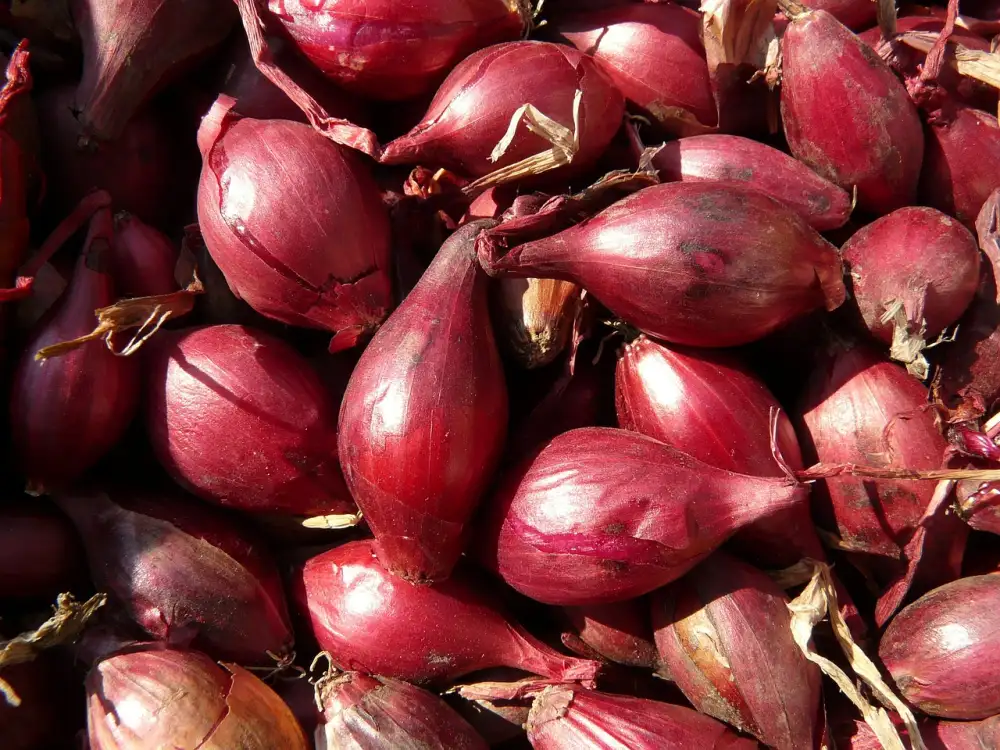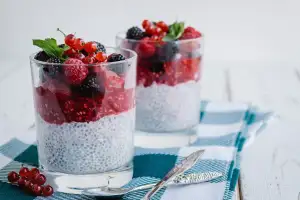Unveiling the Culinary Magic of Shallots: Elevate Your Dishes with this Flavorful Onion Variety

Shallots, a member of the Allium family, are small, bulbous vegetables with a mild and sweet flavor. They resemble garlic cloves but have a milder taste similar to onions. Shallots are widely used in cooking for their unique flavor profile and versatility. They can be consumed raw or cooked and are popular in various cuisines around the world. Rich in vitamins, minerals, and antioxidants, shallots offer numerous health benefits along with adding depth and complexity to dishes.
Nutritional Benefits of Shallots
Shallots are not only known for their unique flavor but also for their impressive nutritional benefits. They are a good source of vitamins and minerals, including vitamin C, potassium, and manganese. Additionally, shallots contain antioxidants that help protect cells from damage caused by free radicals. They also have anti-inflammatory properties that may help reduce the risk of chronic diseases like heart disease and cancer. Incorporating shallots into your diet can boost your immune system and promote overall health.
Culinary Uses of Shallots
Shallots are a versatile ingredient that adds a unique flavor profile to dishes. They are commonly used in French cuisine to enhance the taste of sauces, dressings, and vinaigrettes. Shallots can be sautéed until caramelized to bring out their natural sweetness or used raw for a sharp, pungent flavor in salads and salsas. They are also a key component in classic dishes like Coq au Vin and Beef Bourguignon. In Asian cooking, shallots are often fried until crispy and used as a topping for noodles or rice dishes. Their mild flavor makes them a popular choice for pickling and preserving in vinegar or brine. Overall, shallots are prized by chefs for their ability to elevate the taste of various culinary creations.
How to Grow Shallots
**How to Grow Shallots:**
Shallots are relatively easy to grow and can be cultivated in various climates. To grow shallots, start by planting individual bulbs in well-drained soil with plenty of sunlight. Plant the bulbs about 6 inches apart and 1 inch deep, ensuring that the pointed end faces up. Water regularly, keeping the soil moist but not waterlogged.
As shallots grow, they will produce clusters of bulbs similar to garlic cloves. It's important to keep weeds at bay by regularly weeding around the plants. Shallots are ready for harvest when the tops begin to yellow and wilt. Gently pull them from the ground and allow them to dry in a warm, well-ventilated area before storing them in a cool, dry place.
By following these simple steps, you can enjoy a bountiful harvest of flavorful shallots to elevate your culinary creations.
Popular Varieties of Shallots
1. French Grey Shallots: Known for their mild and sweet flavor, these shallots are commonly used in French cuisine, especially in classic dishes like Coq au Vin.
2. Dutch Yellow Shallots: These shallots have a more robust flavor compared to other varieties, making them ideal for pickling or caramelizing.
3. Banana Shallots: Larger in size with a milder taste, banana shallots are perfect for roasting or sautéing to add depth to dishes.
4. Zebrune Shallots: Recognized by their reddish-brown skin with purple streaks, Zebrune shallots have a rich and complex flavor profile that enhances sauces and dressings.
5. Gray Griselle Shallots: With a delicate and subtle taste, Gray Griselle shallots are often used raw in salads or vinaigrettes for a touch of sweetness.
Each variety of shallot brings its unique characteristics to the table, allowing chefs to experiment and elevate their culinary creations with diverse flavors and textures.
Shallots in Different Cuisines
Shallots are a versatile ingredient used in various cuisines around the world. In French cuisine, shallots are a key component in classic sauces like Béarnaise and Bordelaise. In Thai cuisine, they are often found in spicy salads and stir-fries, adding a unique depth of flavor. In Indian cuisine, shallots are commonly used in curries and chutneys for their sweet and mild taste. In Mediterranean dishes, shallots are frequently included in marinades and vinaigrettes to enhance the overall flavor profile. The delicate yet distinct flavor of shallots makes them a popular choice among chefs across different culinary traditions.
Interesting Facts About Shallots
1. Shallots are often referred to as "multiplier onions" because each bulb can produce multiple cloves, making them a cost-effective option for home gardeners.
2. In ancient Egypt, shallots were considered sacred and were believed to have medicinal properties.
3. French cuisine holds shallots in high regard, using them in classic dishes like beurre blanc sauce and coq au vin.
4. Shallots contain a compound called allicin, which is responsible for their distinct flavor and also provides potential health benefits such as anti-inflammatory and antioxidant properties.
5. Unlike onions, shallots have a delicate and subtle flavor profile that adds depth to dishes without overpowering other ingredients.
In conclusion, shallots are a versatile and flavorful ingredient that can elevate the taste of various dishes. With their nutritional benefits, including being rich in antioxidants and vitamins, shallots offer a healthy addition to meals. Whether used in dressings, sauces, or as a key ingredient in different cuisines around the world, shallots bring a unique depth of flavor to any dish. Consider adding shallots to your culinary repertoire for an enhanced dining experience that will impress your taste buds.
Published: 31. 03. 2024
Category: Food



